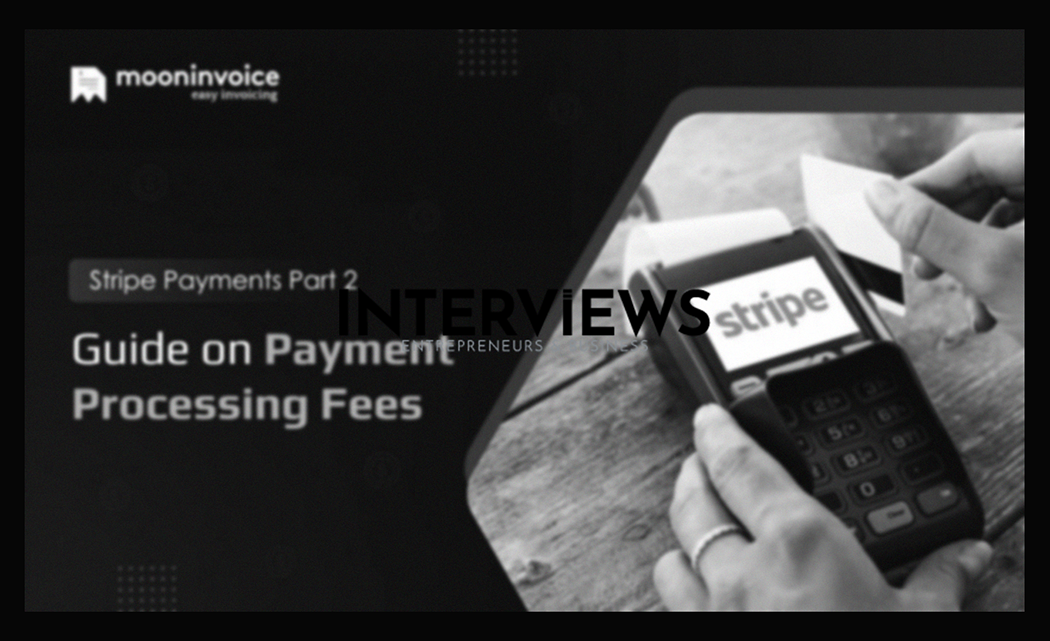Decoding Stripe Fees: What Businesses Need to Know
Exploring online payments? Stripe appears everywhere. Great choice. Stripe stands out. It is user-friendly and developer-friendly. Before diving in, let’s discuss the fees. Nobody enjoys unexpected costs, especially fees.
Stripe’s Transaction Fees: The Nitty-Gritty
Now, let’s discuss how much Stripe charges for transactions. These are like tolls on the digital commerce road.
Standard Online Payments: The Bread and Butter
For standard credit and debit transactions online, Stripe charges 2.9% of the transaction total plus a flat fee of $0.30. If your item costs $100, Stripe takes $2.90 plus $0.30. The total is $3.20.
Wallet Payments: Apple Pay, Google Pay, and the Gang
Good news for tech users! When customers pay with digital wallets such as Apple Pay, Google Pay, or Alipay, fees stay at 2.9% plus $0.30. Stripe does not penalize people for using digital wallets. This is refreshing.
In-Person Payments with Stripe Terminal: Bringing Digital to the Real World
Want a bridge to offline payments? Stripe Terminal lets you accept in-person payments. You can swipe or tap cards! Fees are 2.7% plus 5 cents per transaction. This is slightly lower than online fees, making it favorable in-person.
Micropayments: Small Transactions, Same Fees?
What if you handle micropayments? You might believe fees would decrease. Wrong. Stripe charges micropayments at the standard rate of 2.9% + $0.30. This can hurt if processing primarily tiny transactions.
Stripe Invoicing Fees: Getting Paid the Professional Way
Need to send invoices? Stripe has two main options for invoicing.
Stripe Invoicing Starter: Keeping it Basic and Budget-Friendly
The “Starter” plan is for those needing basic invoicing without extras. The fee is 0.4% per paid invoice. It is straightforward for simple invoicing needs.
Stripe Invoicing Plus: Leveling Up Your Invoicing Game
For advanced invoicing needs, there’s “Plus”. It offers additional features like automation and customization. The fee is 0.5% per paid invoice. This adds to regular Stripe payment fees.
Post-Payment Invoices: Chasing Payments After the Fact
Sometimes, you need to invoice after a service delivery. For these post-payment invoices, Stripe charges 0.4% on the transaction total, capped at a max of $2 (or local currency equivalent). This is in addition to regular processing fees.
Stripe Versus the Competition: The Payment Processing Thunderdome
Stripe faces competition from PayPal, Square, and Helcim.
General Face-Off: Stripe vs. PayPal
In general, Stripe tends to be cheaper than PayPal for many merchants, especially for online payments. Stripe has a simpler fee structure. PayPal may be pricier for standard online transactions.
In-Person Payment Showdown: PayPal vs. Stripe… and Square?
For face-to-face transactions, PayPal often offers better rates than Stripe, especially for hardware options. Square is another strong competitor in this area.
Stripe vs. Square: The Flat-Fee Frenzy
For online sales, Stripe and Square are almost equal in cost. Both usually charge a flat rate of 2.9% + $0.30. For in-person transactions, Stripe may charge slightly more but save a few cents compared to Square.
Micropayment Mosh Pit: Stripe Triumphs (Over PayPal, at Least)
Regarding micropayments, PayPal generally has higher rates for tiny transactions than Stripe. If dealing with small amounts, Stripe could be more budget-friendly.
Chargeback Clash: Stripe’s Got the Edge
Chargebacks happen, and nobody likes them. If you face one, Stripe’s chargeback fees are generally lower than PayPal’s. Every saving adds up.
Enter Helcim: The Dark Horse of Discount Processing
If looking for lower processing costs, consider Helcim. They use an “interchange-plus” pricing model, which can be competitive for high transaction volume businesses.
Is Stripe Right for Your Business? Matching Platform to Purpose
Not all payment processors suit every business. Let’s determine if Stripe fits your needs.
Online Empires: Stripe’s Natural Habitat
If your business thrives online – e-commerce or digital services – Stripe suits you well. It integrates seamlessly with various APIs and platforms.
Brick-and-Mortar Beginnings: Square Steps Up
If launching a physical store, Square is an ideal POS system for new businesses. It’s easy to use and set up for in-person transactions.
Tech Titans and SaaS Sensations: Stripe’s Domain
A high-growth tech company or SaaS business? Stripe often becomes the platform of choice for scalability and flexibility. It adapts with your growth needs.
Transparency Time: Are Stripe’s Fees Truly Clear?
No one likes hidden fees. The good news? Stripe maintains a transparent fee structure. There are typically no setup or monthly fees in standard pricing.
Fee Factors: What Makes Stripe Fees Tick Up or Down?
Stripe fees can change based on various factors.
Currency Conversion Chaos: International Transactions Cost More
Selling globally is exciting! But note that international transactions involve higher fees. Extra charges apply for currency conversion. Factor this into your pricing strategy.
Transaction Volume Tango: More Volume, Maybe Lower Fees?
A potential benefit of growth occurs when a higher transaction volume may allow you to negotiate lower fees with Stripe. It’s worth asking since it acts like a bulk discount.
Security and Chargeback Symphony: Good Behavior Pays Off
Minding your security measures and keeping a low chargeback rate can help you get better fees. Stripe rewards low-risk businesses. Show you’re one, and you may see fee reductions.
Fee Fighting Tactics: How to Potentially Lower Your Stripe Costs
No one wants to overpay their fees. Here are strategies to potentially lower Stripe costs.
Volume is Your Friend (Maybe): Negotiate for Better Rates
If your transaction volume increases, you might negotiate better rates. As you grow, have a chat with Stripe about potential adjustments.
Annual Fee Review: It’s Like a Financial Check-Up
Your business’s finances deserve attention. Make it a point to speak with Stripe yearly. Evaluate your account and processing history. Asking for better rates could yield positive results.
Plan
Upgrade Path: Sometimes You Gotta Pay to Save?
Upgrading to a higher Stripe plan could lead to lower fees in some cases. This occurs when you unlock features that streamline processes or reduce risks. Assess if the benefits of the higher plan exceed the costs.
Payment Puzzle: Why Do Stripe Payments Fail Sometimes?
Payment failures are common in digital transactions. Let’s explore reasons why Stripe payments might fail.
Customer Capers: The Human Element
Many payment failures happen on the customer side. Insufficient funds often cause issues. Typos in payment details like card numbers and expiry dates happen frequently. Humans can be careless.
Issuer Issues: Bank Declines and Mysterious Rejections
Occasionally, it’s the customer’s bank that causes trouble. Card issuers use automated systems to authorize charges. They may decline transactions for various reasons, like suspected fraud or undue security alerts from risk algorithms.
Stripe Radar: The Fraud Firewall (Sometimes a Bit Too Keen)
Stripe Radar is Stripe’s risk detection tool. It’s made to protect you from fraud by analyzing transactions and blocking risky ones. Sometimes, it may block genuine payments. Balancing security and easy transactions is tricky.
API Adventures Gone Wrong: Developer Hiccups (Less Common for Most)
Invalid API calls cause payment failures. This is significant only if you are heavily customizing your Stripe integration. If you aren’t working with code, this issue is less likely to affect you.
Fund Freezes and Payout Puzzles: Stripe’s Holding Habits
Ever wonder where your money goes after a transaction? Here’s the deal with Stripe’s fund holding practices.
Risk Management Rituals: Why Holds Happen
Like other payment processors, Stripe applies fund holds to manage risk and prevent losses. This is standard practice in the industry, protecting both parties.
Temporary Timeouts: Funds Held Briefly
Stripe may apply temporary holds on funds for new accounts or transactions perceived as risky. These holds are often brief and released after some time.
Rolling Reserves: A Percentage Held Back Over Time
In some cases, Stripe uses rolling reserves, holding a portion of your transactions for 30-90 days. This often applies to businesses deemed higher risk or having limited processing history. It acts like a security deposit.
Account Termination Timeouts: Funds Held After Closing
If your Stripe account terminates, they will hold any remaining funds for 90 to 180 days. This is to address potential chargebacks or disputes after closure. Plan accordingly if you consider closing your account.
Initial Payout Period: Waiting for Your First Funds
New to Stripe? Expect delays. Stripe usually schedules your first payout for 7-14 days after your first successful payment. This initial wait is a security measure. Subsequent payouts tend to be faster based on your schedule.
Fee-Shifting Shenanigans: Passing Stripe Fees to Customers
Want customers to handle the fees? You can add a processing fee automatically to the total if using Stripe. Deciding whether you should do this requires careful consideration of customer experience and alignment with your pricing strategy.
Stripe Alternatives: Exploring Other Payment Paths
Stripe is great, but other options exist for payment processing. Let’s look at some alternatives.
Helcim: The Budget-Conscious Contender (Again!)
If minimizing fees is crucial, Helcim is worth considering again. It is often listed as the cheapest option available.
Square: The “Lowest Transaction Fee” Claim (Debatable)
Some say Square offers the “lowest transaction fee,” but this isn’t always true. For online sales, they align closely with Stripe. For in-person sales, they are competitive. “Lowest” can be misleading in payment processing, so compare carefully.
PayPal: Still in the Ring (and Sometimes Cheaper!)
Even if Stripe is often cheaper, PayPal might win on price in some situations. Particularly for in-person transactions, depending on account terms, PayPal can present a cheaper option. Always shop around!
Adyen: The Enterprise-Grade Alternative
If you need something more robust that’s potentially cheaper for high volumes, Adyen is worth a look. It’s presented as a viable alternative, especially for large enterprises with complex needs.
IRS Insights: Does Stripe Report Your Earnings?
Tax time arrives every year. Does Stripe report your earnings?
Yes, Stripe Reports to the IRS. No Surprises Here.
The answer is clear: Stripe reports to the IRS in the US and similar authorities elsewhere. They must report payment volumes that meet certain thresholds. This is standard in the digital economy. Keep records organized!
Stripe’s Shadow Side: Are There Any Downsides?
No platform is flawless. Let’s discuss potential downsides of Stripe briefly.
Fee Frustration: Transaction Fees Can Add Up
Though Stripe has competitive pricing, transaction fees may accumulate, especially for businesses with high volume and low profit margins. Monitor processing costs closely and include them in your financial planning.
Merchant Category Code Constraints: Limited Acceptance
Stripe supports specific Merchant Category Codes (MCCs). Certain high-risk business categories may not be accepted. If your business fits in those restrictions, check their MCC policy for eligibility.
Understanding Stripe’s fee structure and practices is vital for making informed decisions for your business. By clarifying the costs and comparing options, you will navigate payment processing confidently, keeping more money in your pocket.





